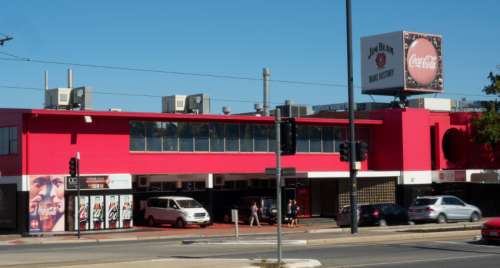What changes do you hope to bring to the community housing sector?
The main change I want to see is the sector at least quadruple in size. I’ve been in the social affordable housing sector for a long time now and seen the amazing difference it can make for people on lower incomes to medium key-worker housing as well. I hope I’m joining at a time when there is going to be opportunity to make those changes, and to make sure that community housing can be the main delivery vehicle for better housing.
How do you feel your past experience will help you at CHIA national?
There’s work we’ve been doing in NSW which I’d be interested in taking forward nationally. We’ve been focusing on not just how we build and get more social affordable housing, but also how we make sure the services we deliver to people are excellent too. There’s very little point in delivering new housing if the standard of services doesn’t match that. One of the projects that I’m keen to take forward is developing tool kits for providers. This will help them respond to people with complex needs and see how we can potentially adapt and roll it out nationally. We also need to look at the gaps. One of the areas may be veterans. It’s an area that most community housing providers probably haven’t heard about because people don’t always identify themselves as veterans. So, to develop a suite of resources that builds on the work from NSW. Victoria is leading the way in energy responses to energy efficiency. In South Australia there’s a lot of good work that’s gone on in disability housing. The Northern Territory, Queensland and Western Australia could tell us a thing or two about remote Aboriginal housing. What I’ve learnt is it’s easier to work together and collaborate, rather than doing things from scratch.
What are the biggest challenges the community housing sector faces?
I’m not 100% sure that governments understand the importance of social and affordable housing. It’s still too often seen as a welfare service, and something that people only need or require when they’re in a particularly vulnerable position. It isn’t necessarily seen as a type of housing that’s needed on a long-term basis. One of the challenges for us is to make sure all governments understand housing is a fundamental, social and economic infrastructure. In the very recent past we’ve seen governments change housing policy almost overnight. That really prevents long term investment and therefore growth in social and affordable housing. We need to get the argument across that this is fundamental, and governments should invest in it. It’s not a subsidy. They should invest in it just as they invest in transport or the utilities.
The second big challenge is to make sure the industry gives back as well. It isn’t just about asking government to invest, but also making sure that we build excellent property. We need to have a property standard that we can aspire to, so that properties are there for all segments of the population. It’s a great sector, but it’s only a great sector if it delivers. The project that we want to take forward is developing our own standards as an industry – the National Community Housing Standards. It will be saying how we intend to respond to people who have a disability, people who have experienced domestic and family violence, what we’ll give all our tenants in terms of customer service – those sorts of things.
With the upcoming national election approaching, how do you see the community housing sector’s relationship with government evolving?
I hope that we’ll be seen as a partner. People don’t enter community housing to make loads of money. They usually enter it because they are really committed to the concept. I think we are trustworthy and reliable. In that respect, we should be given more of a say in terms of how and what’s required. So, when government has a policy or programs it wants to introduce, it should be sitting down with us. Because we’re not going to be looking at that program and thinking how much money we can take out of there to pay high salaries. We don’t want to be seeing a program that’s already been designed and having to come afterwards and say, ‘I think you need to tweak it here or tweak it there.’ Because in the end, the people that lose are the government and the tenants.
What are some of your past achievements in the sector?
At CHIA NSW, we worked with Aboriginal housing providers that weren’t our members. We are now partnering with an Aboriginal Community Housing Industry Association in NSW. I’m really pleased about that as its new to me, and I just seriously believe that you never know everything. One of the best ways of keeping young and enthusiastic and energetic is to learn new things. We were able to work with those amazing Aboriginal community housing providers and they’re recruiting at the moment for their first board. They’ve been in existence as a shadow organisation, but they’ll be launching to the world in March with a brand-new board. The great thing is they are not treated by government in the same way the mainstream is. The second thing I’m really pleased about, was setting up the NSW Community Housing industry Council. I’m hoping that council is where the idea of government being seen as a partner will become real. The council’s purpose is to ensure a strong and viable community housing sector in NSW. Wouldn’t it be great if we could take that – of which the Aboriginal Community Housing Association is a member – and make it national?
What needs to be done to properly implement CHIA’s National Plan?
We need a National Community Housing Council. We also need the country to recognise that it needs to have a proper understanding of housing need. If you’re going to plan for housing, you need to recognise it is an important, economic infrastructure. There needs to be a national framework for housing-needs assessments. There also needs to be state and regional housing-needs assessments. So when we do get investment, it is put into where it’s needed. The Strengthening Economic Cases for Housing Policy is a step in the right direction because it shows what can happen if we plan housing properly. The impact on productivity is tremendous.









